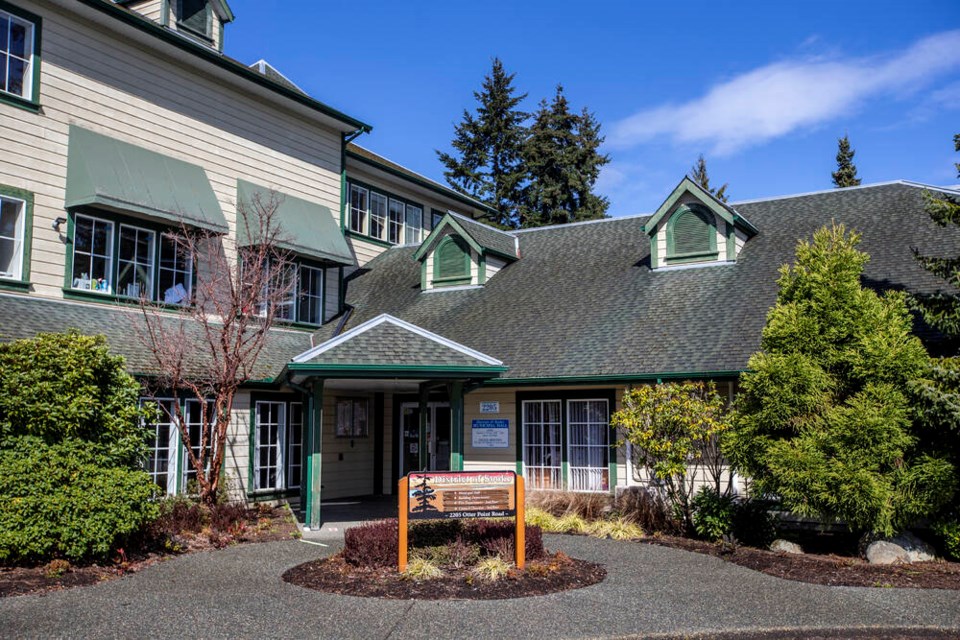It’s a spectacularly sunny long-weekend in Sooke. Shirt sleeve weather, perfect for a wander down Whiffin Spit, or maybe a round at the splendid little DeMamiel Creek golf course (nine holes for 15 bucks, payable in a parking meter!)
Still, there’s a good-sized turnout at the municipal all-candidates forum at Edward Milne Community School.
Actually, the candidates themselves comprise a good portion of the crowd: a whopping 26 names are on the ballot — three for mayor and 23 for six council seats. More people are running in Sooke than in Saanich, which has eight times the population. What gives?
Growth.
Or at least the complications of growth.
Same story in the rest of the region. It’s not just the city of Victoria, with its high-profile tug-of-war over the Missing Middle Initiative, that is wrestling with housing, transportation and other issues related to the pace of population increase. In the capital region’s smaller municipalities, there’s a link between the rate of change and how lively the local council races are.
Overall, the population of the Victoria metropolitan area — everywhere from Sooke to Sidney — grew by eight per cent between 2016 and 2021, reaching a total of 397,000.
In communities with relatively little growth over that term, the races have been more like comfortable strolls, with few people roused to run. In Esquimalt, where the population dipped a bit to 17,533, just seven candidates are playing musical chairs for the six councillors’ seats. Mayor Barb Desjardins faces a lone challenger, Sonya Gracey (known as Sonya Chandler when she served on Victoria council a dozen years ago). In Oak Bay, the only other area municipality where the population declined, Mayor Kevin Murdoch is unopposed. Ditto for mayors Ryan Windsor in Central Saanich, which grew by just over three per cent, and Cliff McNeil-Smith in Sidney, which went up 5.5.
By contrast, the ballot in booming Langford, where the population surged 32 per cent, and where a third of the region’s new homes were built, includes a slate dedicated to toppling the status quo on a council whose members tend to measure their time in office in decades, not years. In Colwood, where the count was up 12.5 per cent, there’s some fussing over the amenities tied to the massive developments in the old gravel pit. In North Saanich, where the rate was nine per cent (and where residents are always up for a good snarlfest over the future of the green bits anyway) three are running for mayor and 13 for council.
Sooke? Its population topped 15,000 last year, up 16 per cent — twice the regional average — since 2016.
The numbers won’t come as a surprise to those stuck in the daily commute along the lone road to the city, which now pokes along like the Victoria Day parade. Growth affects everything from demand at the food bank to the ability of parents to enrol their kids in swimming lessons — but it also means more places to live and a bigger tax base to pay for things like the pool. It’s also fuelled by the cheapest real estate in the region (though with an average single-home price of $863,000 last year, being the cheapest in Greater Victoria is like being the most bashful Kardashian).
It also means Sooke voters have a mob of candidates to sort through. Five of six incumbents are running. So are former councilors Herb Haldane, Jeff Stewart and Kevin Pearson.
So are four candidates for council (and three for school board) grouped under electionsforchange.ca, though candidate Rob Anderson, who ran for the People’s Party of Canada in last year’s federal election, told Saturday’s Edward Milne gathering that they’re not a slate, but a group of like-minded people pooling expenses.
Almost all the Sooke candidates’ statements focused on growth-related topics, voicing common values. Everybody wants to retain a small-town feel. Everybody wants attainable housing. Everybody wants to protect green space. But if you want to provide more housing but still protect green space, that means increasing density, and how does that fit with Sooke’s vision of itself? Or if you stop building, won’t prices soar?
These are hardly Sooke-specific worries. Talk of housing, transportation, trees and quality of life dominated all-candidates meetings in Saanich last week. The universality of the housing crisis is what has prompted would-be premier David Eby to propose measures to increase B.C.’s housing supply, allowing the province to brush aside municipal councils when deemed necessary.
Increasing the housing supply is just part of the equation. There’s also the demand side, the part where we wonder if there’ll ever be a limit to the number of people who want to move to the most naturally blessed part of Canada. Whether you’re a retiree, or sleeping rough, or one of those lucky souls whose work-from-home jobs let them live wherever they want, Victoria is an attractive destination. Think of housing as a water glass. No matter how big a glass you place under the tap, it will eventually fill up as long as the water keeps flowing.
>>> To comment on this article, write a letter to the editor: [email protected]



